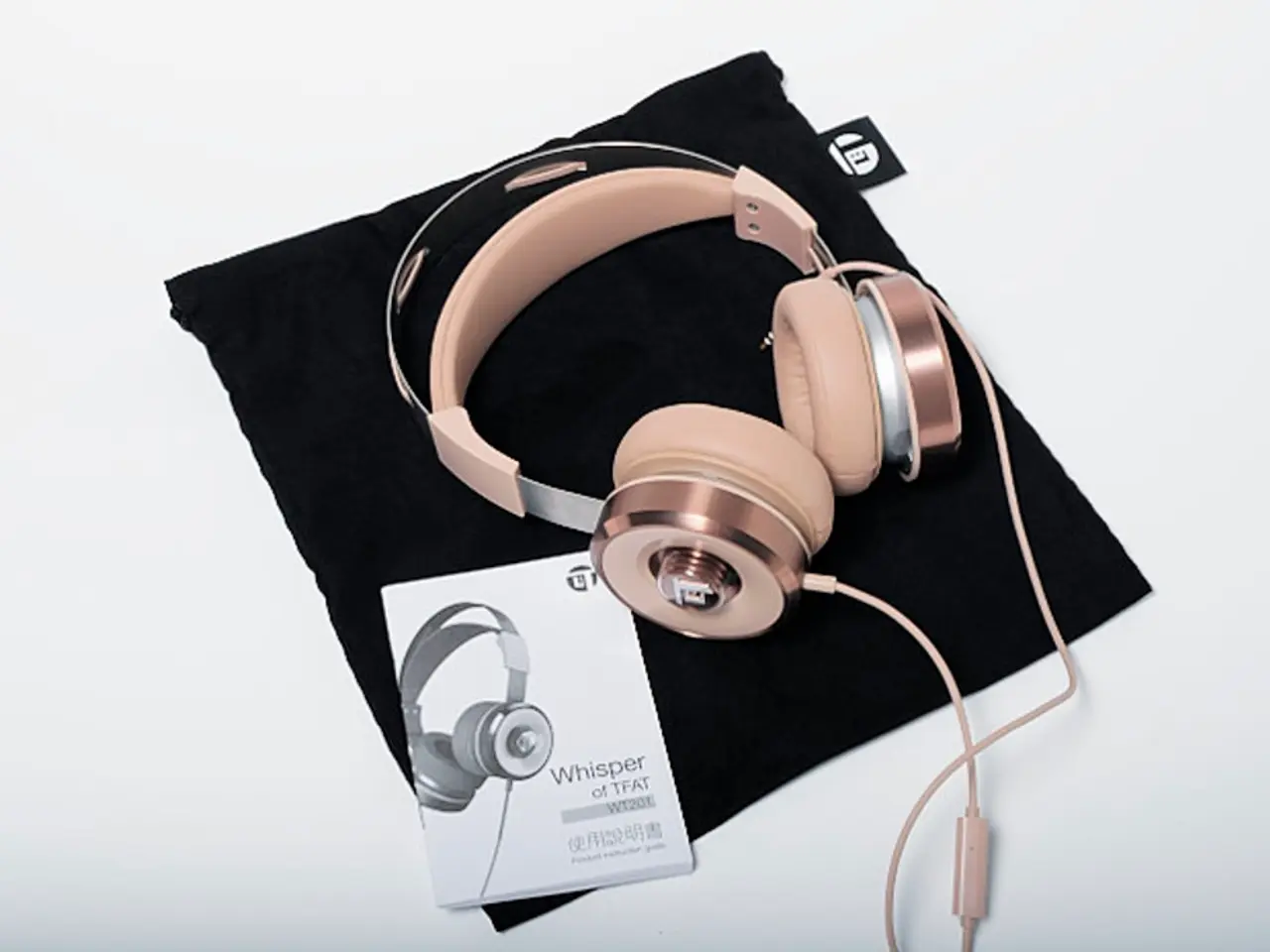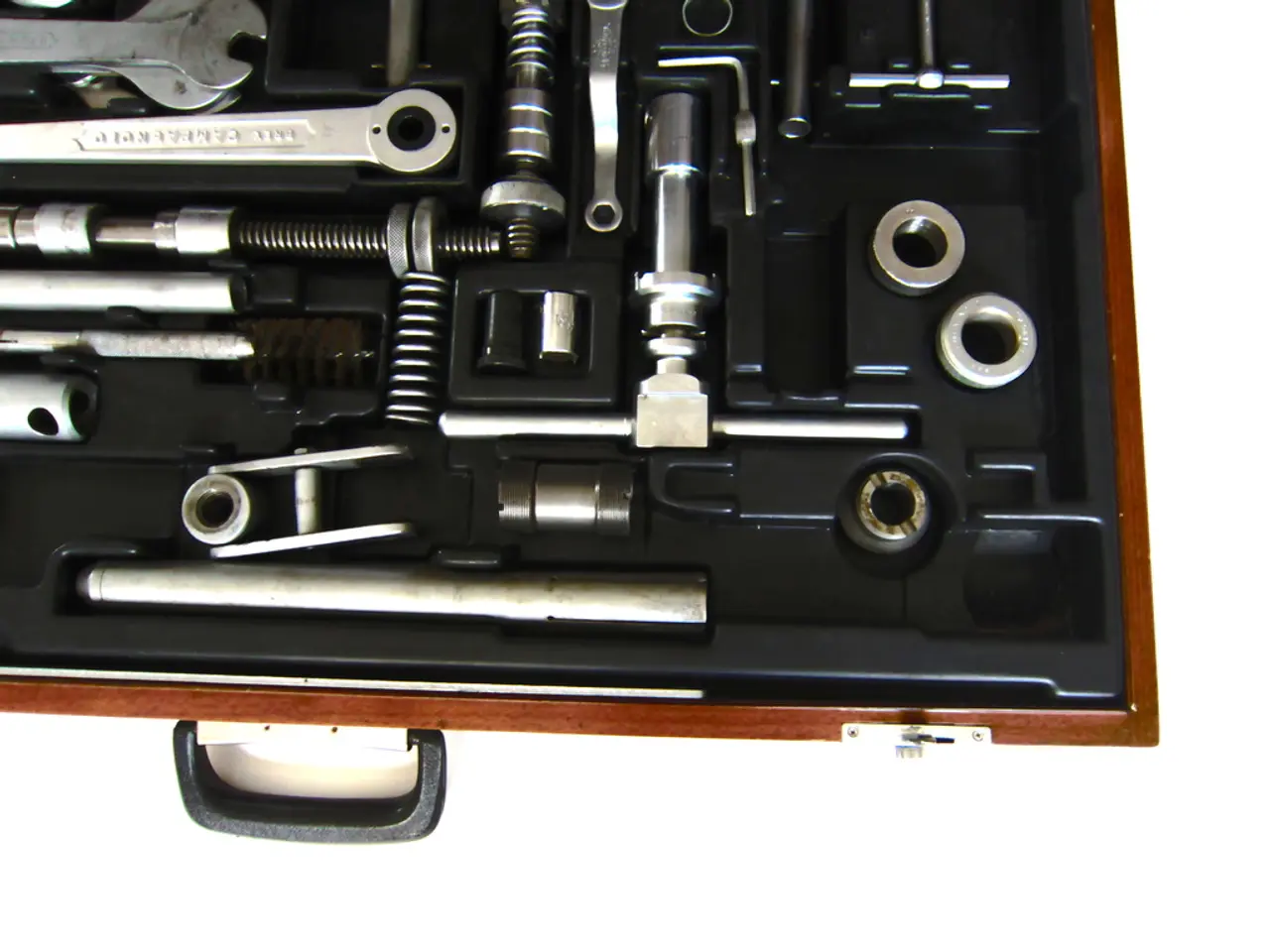Tech firms are intensely working on reducing the size and thickness of their products significantly.
In the ever-evolving world of consumer technology, 2025 is shaping up to be a significant year for miniaturization. This trend is particularly noticeable in foldable phones, smart glasses, and wearables.
Samsung's Galaxy Z Fold 7, with its 8.9mm thickness and 215g weight, exemplifies the progress in foldable phones. The device boasts a high-end 200MP camera, enhanced internal specs, and a thinner, lighter design, making it one of the most portable book-style foldables available. Samsung is also working on a tri-fold phone, pushing the boundaries of foldable technology even further [1][2][3][4].
Google's foldable efforts, represented by the Pixel 10 Pro Fold, seem to be more incremental, primarily focusing on screen size and chipset updates [1].
When it comes to smart glasses and wearables, Samsung is collaborating with Google on Project Moohan, an XR (extended reality) headset planned for release in 2025. This device aims to expand the ecosystem around premium AI-driven mobile devices, reflecting the trend towards more compact, versatile wearables [3].
Meta, too, is making strides in this area. Their Ray-Ban sunglasses can capture photos, footage, and sound, and use a smartphone's 5G connection for AI queries [5]. Meta is investing heavily in research and development for wearables, despite limited sales, which could be seen as a strategic bet if the category becomes popular [6].
Tech and media analyst, Gareth Sutcliffe, considers wearables a significant opportunity for Meta and Google. He views the development of smart glasses as a long-term endeavour, potentially replacing the smartphone in the future [7].
Li-Chen Miller, Meta's vice president of product and wearables, shares this sentiment. She finds the challenge of building comfortable, onboard technology glasses intriguing [8]. However, despite showcasing a prototype, Meta's smart glasses are not yet ready for the consumer market [9].
Mark Zuckerberg aims to combine Xreal's and Ray-Ban's capabilities into a single pair of smartglasses capable of capturing content and displaying graphics [10]. Experts suggest that prices of wearable devices like Xreal's could be lowered by shifting the computing burden to a mobile phone or computer [11].
As we move towards 2025, it's clear that the race for miniaturization and integration in consumer devices is heating up. Whether it's foldable phones or smart glasses, companies are investing heavily in research and development to create more capable, ecosystem-integrated form factors. The future of technology is undoubtedly wearable, and it's an exciting time to be a part of this revolution.
References: [1] https://www.theverge.com/2022/8/10/23323153/google-pixel-foldable-phone-patent-design-details-leak [2] https://www.theverge.com/2022/8/10/23323153/google-pixel-foldable-phone-patent-design-details-leak [3] https://www.theverge.com/2022/4/26/23041762/samsung-project-moohan-google-collaboration-vr-ar-headset-2025 [4] https://www.theverge.com/2022/4/26/23041762/samsung-project-moohan-google-collaboration-vr-ar-headset-2025 [5] https://www.theverge.com/2022/4/26/23041762/samsung-project-moohan-google-collaboration-vr-ar-headset-2025 [6] https://www.theverge.com/2022/4/26/23041762/samsung-project-moohan-google-collaboration-vr-ar-headset-2025 [7] https://www.theverge.com/2022/4/26/23041762/samsung-project-moohan-google-collaboration-vr-ar-headset-2025 [8] https://www.theverge.com/2022/4/26/23041762/samsung-project-moohan-google-collaboration-vr-ar-headset-2025 [9] https://www.theverge.com/2022/4/26/23041762/samsung-project-moohan-google-collaboration-vr-ar-headset-2025 [10] https://www.theverge.com/2022/4/26/23041762/samsung-project-moohan-google-collaboration-vr-ar-headset-2025 [11] https://www.theverge.com/2022/4/26/23041762/samsung-project-moohan-google-collaboration-vr-ar-headset-2025
- In the realm of wearable gadgets, tech giants like Samsung and Meta are making significant strides, collaborating on projects like Project Moohan to create more advanced and compact XR headsets by 2025, following the trend of miniaturization in consumer technology.
- As the race for compact, versatile technology heats up, the future of technology is evidently wearable, with companies like Samsung investing in research and development to create foldable phones, smart glasses, and other wearable devices, striving to create more capable, integrated devices that could potentially replace traditional gadgets.




